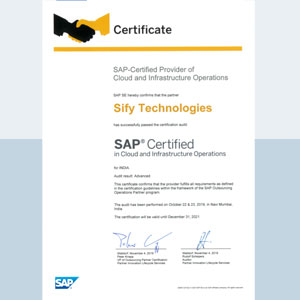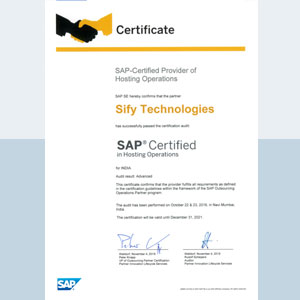Table of contents
Modern enterprises run on many moving parts – branches, cloud apps, data centers, and edge sites. In this setup, downtime rarely shows up as “everything is down.” It usually starts as small slowdowns that add up and spill over.
This guide explains why downtime costs so much, what typically causes it, why older tools miss it, and practical steps to prevent it.
New here? See the companion blog: The future of AI network management in India
Why Network Downtime is So Costly
- Revenue at risk: Every minute matters for payments, trading, retail checkout, and streaming.
- Productivity loss: Incidents pull experts into war rooms and push planned work aside.
- Compliance pressure: In regulated sectors, repeated misses invite audits and penalties.
- Growing complexity: Quick fixes pile up and make the next incident harder to solve.
The Leading Causes of Network Downtime
Picture month-end in a large Indian bank. Payments spike, a long-haul link between Mumbai and NCR starts to fray, and calls flood the help desk. Nothing is “down” yet, but checkout times creep up, traders see lag, and customer sentiment dips.
Here’s the fact – the teams that reduce network downtime fastest don’t chase every blinking light; they spot the early drift, shift critical flows to healthier paths, and schedule the fix without breaking the day.
This is the difference between a checklist and a living practice.
Downtime rarely has a single villain. It’s usually a few small things lining up at the worst possible moment. Here are the usual suspects:
- Aging gear that seems fine.
Old optics, cables, or line cards slowly degrade. Nothing says “failed” yet, but errors creep up until a busy hour tips them over. - Risky changes at the wrong time.
A tiny policy tweak, a rushed firmware upgrade, or a copy-paste config can block the wrong traffic, especially during quarter-end or festive spikes. - Carrier or fiber trouble outside your walls.
Backhoes, street works, or a noisy long-haul span between cities (say, Mumbai ↔ NCR) can introduce drops and jitter you don’t control. - Software bugs and routing wobble.
New code trains, flapping sessions, or unstable routing decisions create brownouts. - Capacity surprises.
Marketing launches, payroll runs, or sales peaks hit harder than expected. - Security events that double as congestion.
DDoS floods, malware beaconing, or DNS abuse eat bandwidth and CPU. - Third-party hiccups that back up your app.
A cloud region blips or a partner API slows down; your services wait, retries pile up, and the network looks guilty. - Power or facility blips.
A brief power event or cooling issue in a data center can have a cascading effect. - People and process gaps.
No clear rollback or too many handoffs in the war room stretch out recovery time.
The Hidden Costs You Don’t See on the Invoice
- Longer time to recover: More alerts and more people on calls raise MTTR.
- Change paralysis: Fear of breaking things stalls upgrades – and risk grows.
- Customer fallout: Slow pages and laggy apps hurt satisfaction before an outage is obvious.
- Overprovisioning: Buying extra bandwidth to mask process issues pushes up TCO.
Know more about efficient network monitoring to reduce downtime for large enterprises.
Why Traditional Monitoring Doesn’t Stop Downtime
Traditional tools wait for a hard red line before they shout. Real problems tend to creep in. Because the clues live in different dashboards, people see pieces, not the story. One small issue sets off a flood of alerts, and during busy hours there isn’t time to go through them all.
By the time the root cause is obvious, customers have already felt the slowdown. That’s why “monitored” doesn’t always mean “protected.”
A simple way to cut downtime:
- Watch the essentials, often.
Check traffic, key link health, and simple app pings every few minutes – not once an hour. - Know your normal.
Each site and path has a typical pattern by time of day. Save that baseline so small drifts stand out early. - Put the signals together.
View network, carrier, and app checks on one screen. You’ll spot the first cause, not just the side effects. - Act automatically but safely.
When trouble starts, shift traffic to a healthier path, slow non-critical flows, or switch routes. Log the action and open a ticket. - Measure what users feel.
Track goals like page/API response time and call quality. Use them to confirm the fix worked.
Best Practices to Minimize Network Downtime
The organizations that keep downtime low build breathing room and make smart, small changes. For example, critical locations have truly separate routes and providers. Capacity planning favors smooth customer experience over squeezing every last percent. Changes go out in bite-sized steps with quick rollbacks, scheduled away from peak times like payroll days or festivals. These are kept close to a clean, optimal setup so any drift is easy to spot.
Visibility acts like an early-warning system. Teams watch link health alongside a few simple end-to-end checks for their most important journeys (checkout, calls, key APIs) and view them together so the real cause pops out from the noise. When things get rough, the playbook is calm and clear: protect payments and customer traffic first, push bulk jobs aside, move flows to a healthier route.
Monthly fire drills turn all of this into muscle memory, and progress is tracked in plain language: how fast we noticed, how fast we fixed, and whether users got the experience we promised.
Here’s a sample checklist:
Design & capacity
- Dual-home critical sites and ensure truly different paths/providers.
- Keep enough headroom so short bursts don’t swamp important traffic.
- Test city-to-city latency (e.g., Mumbai ↔ NCR, Chennai ↔ Bengaluru) during peak hours.
Change discipline
- Use small test changes and auto-rollback for routing/SD-WAN updates.
- Avoid busy business windows (payroll days, festive sales).
- Keep a “golden config” and alert on any drift from it.
Visibility & early warning
- Turn on health checks for optics and links everywhere to catch trends.
- Use synthetic tests for your top business paths to see issues before customers do.
- Centralize alerts and use simple correlation to cut noise.
Resilience & automation
- Give priority to business-critical traffic (payments, voice, customer APIs).
- Pre-define a “brownout” plan: what to de-prioritize when links are congested.
- Automate basic DDoS steps (upstream scrubbing, quick blocks).
People & process
- Run monthly fire drills (e.g., simulate a fiber cut).
- Track MTTR, time to detect, and how often you hit your user-facing goals.
- Post-incident reviews should focus on earlier detection and smaller blast radius – not blame.
Sify’s Approach – Reduce Network Downtime, Improve Productivity
Sify is the network fabric behind many mission-critical enterprises, combining a carrier-neutral data center footprint with an all-India backbone, cloud on-ramps, and AI-assisted operations built for low latency, high uptime, and regulated workloads.
Know more about how you can connect, manage and transform your network with Sify’s network monitoring services.
Why Sify?
- India-optimized network fabric
- Metro-to-metro routes engineered for consistent latency across Mumbai, NCR, Bengaluru, Chennai, Hyderabad and key Tier-2 hubs.
- True path diversity and peering depth to keep apps responsive during cuts, surges, or regional events
- Neutral interconnect for cloud and data gravity
- Direct on-ramps to AWS, Azure, Google Cloud, and OCI plus rich IX presence – shorter, more predictable paths for APIs, data pipelines, and hybrid architectures.
- High-bandwidth DCI between Sify campuses and customer sites to move AI/training data without throttling business traffic.
- AI-assisted assurance as a service
- Continuous telemetry from underlay, SD-WAN, and app probes feeds Sify’s NOC for early-warning detection and root-cause isolation.
- Closed-loop actions protect revenue flows first – rerouting, policy shifts, and rate controls applied in seconds, not change windows.
- Security and compliance built into the fabric
- Managed detection and response, micro-segmentation, and policy enforcement aligned to India’s BFSI, healthcare, and public-sector norms.
- Every detection and change is audit-ready – mapped to controls, retained, and reportable.
- Prove it, then scale
- Exec-friendly dashboards show MTTR, time-to-detect, and SLO hit-rates improving month over month.
- Start with a high-value corridor (e.g., Mumbai ↔ NCR) and scale the same controls across regions and clouds.
Ready to see how your critical flows land on Sify’s fabric? Let’s map intents → SLOs → policies and run a targeted pilot. Connect now.























































